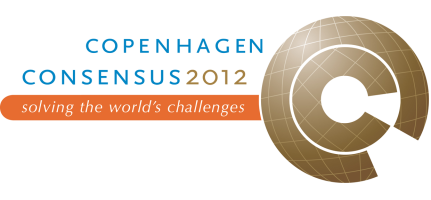Third Copenhagen Consensus: Climate Engineering Assessment, Bickel Lane
Assessment Paper
J. Eric Bickel and Lee Lane prepared new research Climate Engineering for the third Copenhagen Consensus in 2012, by updating of one of the key research papers from the Copenhagen Consensus on Climate in 2009 (Fix The Climate). The working paper used by the Expert Panel is available for download here, the finalized paper has been published in Global Problems, Smart Solutions - Costs and Benefits by Cambridge University Press.
Short summary
Climate-engineering is a potential response to climate change. J. Eric Bickel and Lee Lane argue that at a relatively low cost, climate-engineering could pay large dividends. This essentially means cooling the planet, by reflecting more of the sun’s rays back to space. One promising approach is Stratospheric Aerosol Injection – where a precursor of sulfur dioxide would be continuously injected into the stratosphere, forming a layer of aerosols to reflect sunlight. The amount of sulfur required to offset global warming is on the order of 2% of the sulfur that humans already inject into the atmosphere, largely through burning fossil fuels. Another suggested approach is Marine Cloud Whitening, where seawater would be mixed into the atmosphere at sea to make the clouds whiter and more reflective.
Bickel and Lane do not suggest actually implementing such programs at this point, but they look at the costs and benefits of preparing the knowledge of how they might be deployed in the future. They estimate the cost of a climate-engineering research and development program as being on the order of a billion dollars: a small fraction of what the United States alone is spending on climate-change research each year. They roughly estimate that each dollar spent could create $1,000 of benefits in economic terms.
Such high benefits reflect the fact that SRM holds the potential of reducing the economic damages caused by both warming and costly CO2 reduction measures (such as carbon taxes). These early reduction costs tend to be higher than those of climate change; so by lessening the stringency of controls, climate-engineering may provide near-term benefits—compared to strategies relying solely on emissions reductions.
Moreover, if climate change should suddenly get much worse (reach the so-called tipping points), geo-engineering appears to be the only technology that could quickly cool the Earth. This feature would allow it to play an important risk management role despite this so far intractable source of uncertainty.

